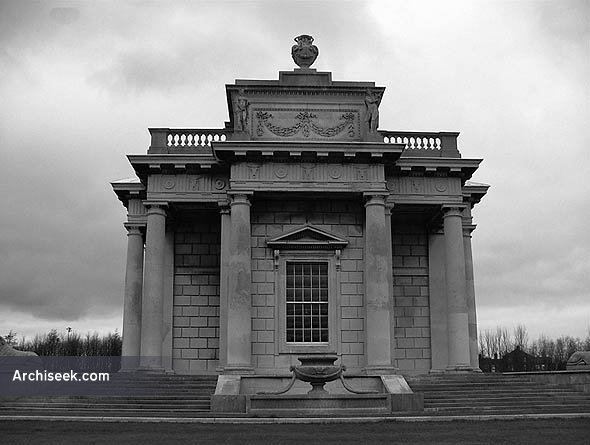1773 – Casino, Marino, Dublin

Acknowledged as the most important neo-classical building in Ireland, the Casino was designed by Sir William Chambers for Lord Charlemont as a garden pavilion at his Marino Estate. The only part of the great estate to survive, the Casino was under construction from 1755 to the mid 1770’s and underwent many years of neglect from 1881 when the Charlemont Estate was sold until 1930 when an Act of Parliament was enacted to allow it to be taken into state ownership. Recently restored by the Office of Public Works, the building now stands as a perfect example of Chambers’ work and the cultural aspirations of the Irish ruling classes.
Chambers was always proud of his designs for the Casino but his employment in England meant that he could never travel to Ireland to see the completed building. It was an expression of his earliest influences from Paris and Rome and he wrote in his book The Treatise on Civil Architecture (1791) that it was derived from an un-executed design for ‘one of the end pavilions of a considerable disposition made soon after my return from Italy….for Harewood House.’
For such an architecturally important building, the Casino is deceptively small – only fifty feet square to the outer columns. Yet the interior contains three floors of accommodation. In plan it is a greek cross with each projecting elevation framed by a pair of columns. The exterior façades are all richly adorned with sculptural ornament and decorative carving. It’s appearance from a distance is deceptively simple – but as one approaches the rich decoration and differences in façade treatment becomes apparent. The main façades are the north and south with the entrance being on the north. These are dominated by the solid attic storey, statues and urns. The entrance façade has a doorway that rises almost to the height of the columns emphasising the monumentality of the building – even though it is entered through a door that is half the height of the outside door. This change is scale between exterior and interior allows the Casino to contain many more rooms than it would appear from outside. The decoration is also functional – the urns contain chimneys while the outermost columns contain the down pipes from the gutters so as not to spoil the elevations.


















